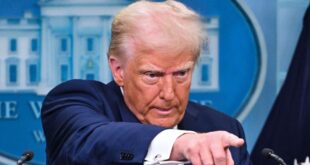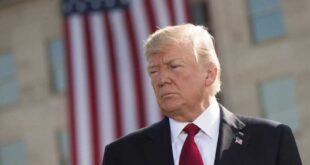After Brexit and the significant growth of Eurosceptic and populist influence in Europe, the future of the European Union seems to be no longer questioned. However, the future is always open, and therefore there is more than one possible scenario.
The U.S. National Intelligence Council proposes three options for the development of this situation: two negative and one positive.
A Collapse scenario has a low probability of occuring but would entail very high international risks. In this scenario, domestic firms and households respond to indications of an imminent currency regime change by rapidly accelerating withdrawal of euro deposits from domestic financial institutions. Following contagion to other member states and economic damage to the core countries, the euro would be the first casualty. The EU as an institution would be a likely collateral victim because the single market and freedom of movement across Europe would be jeopardized by the reinstatement of capital and border controls. Under such a scenario, severe economic dislocation and political fracture would lead to a breakdown in civil society. If the collapse were sudden and unexpected, it would very likely trigger a global recession or another Great Depression.
In a Slow Decline scenario, Europe manages to escape from the worst aspects of the current crisis, but fails to undertake the necessary structural reforms. As member states endure years of low economic growth, they stick together in order to avoid major political and economic disruptions. EU institutions hang on, but public discontent remains high. The euro survives, but it does not become a rival to the dollar or the renminbi. Given years of low economic growth, Europe’s international presence is diminished; countries re-nationalize their foreign policies.
Our third scenario, Renaissance, is based on the familiar pattern of crisis and renewal, which Europe has experienced many times in the past. After staring at the abyss, most European leaders agree on a “federalist leap.” Publics support such a step, given the imminent risks involved maintaining the status quo. A more federal Europe might begin with only a core group of euro zone countries with some choosing to opt out or adopt a wait-and-see policy. Over time, despite the existence of a multispeed Europe, the single market would still be completed and a more united foreign and security policy agreed upon with enhanced elements of European democracy. European in inuence would increase, strengthening Europe’s role and that of multilateral institutions on the world stage.
Ilaria Maselli, who is a senior economist for Europe at The Conference Board (independent business research association), proposed four possible scenarios for the European Union.
Continued Stagnation. A combination of inadequate reform and weak global growth prolongs the current climate. This scenario mainly brings fortune to firms focusing on domestic demand, and most of the lackluster growth comes from consumer spending by Europeans. Private sector investments hesitate in face of high policy uncertainty, while public investment stagnates for fear of decisively abandoning the austerity framework.
A Reset. A combination of reform and higher global growth results in a Reset. Under the EU umbrella, governments renew their commitment to future investment and removing trade barriers. They also renew their attention to income and wealth inequality, within and between countries. Tailwinds of global growth help finance the effort, along with the decision to put an end to the austerity framework and increase government spending via a single larger budget. Because many different sources and factors contribute to growth, businesses of all sectors benefit in this environment. Life is good, though not everywhere. Such a scenario also requires a subset of the 27 moving towards a political union.
A Tightrope. A combination of institutional reform at the European level and weak global growth leads to high uncertainty. The decision to reform comes in response from pressures throughout the continent, including Brexit. As a result, the member countries and the EU walk a Tightrope between managing expectations and creating sufficient growth. Reforms take time to produce the expected results, and in the meantime, productivity growth might slow down. Due to weak external demand, government spending plays a substantial role in bolstering the economy. As such, this scenario most favours businesses that provide government services.
Lip Service (verbal promises but no action). Publically, countries pay lip service to the European integration, but in reality find their sources of growth outside the bloc. In this environment, successful businesses comprise mainly of exporters located in Continental Europe – their employees, suppliers, and stakeholders alike. In combination with inadequate reform, the existence of the Single Market only benefits some countries, while incomes stagnate in others; this only further fractures Europe.
If the situation is objectively considered, then both positive scenarios, a Renaissance (US version) and Reset (EU version), look hardly realizable. The political institutions of the EU are dogged by controversy. The bureaucracy cannot cope with current challenges, and the impact of external forces (for example, the situation in Romania) could still play a critical role. The marked cooling of relations between the US and Germany, even on the rhetorical level, as well as the collapse of the Trans-Pacific Partnership exacerbate the current situation.
What are Russian expectations and the probable prognosis of Europe’s future? Ironically, Russia is interested in a united and stable Europe. But there is one condition. It must be an independent player, albeit a collective one. Until now, Brussels has been one of Washington’s pieces on the chessboard of Eurasia. The sanctions against Russia, the Eastern Partnership Project, the NATO operation Atlantic resolve – all of these combinations are not authentic European decisions. Even taking into consideration the possible improvement of Russian- U.S. relations, a kind of revision of the Euro-Atlantic integration is necessary for a trusting relationship between Moscow and Brussels. Ideally, it needs to be replaced by Eurasian integration.
But Russia should be prepared for the possible scenario of the EU’s collapse. Then bilateral relations with key countries in the region should be intensified, although this does not mean that such preferences must be made at the expense of other sides. Before the imposition of sanctions, the bulk of export-import relations between Russia and the EU fell to Germany, the Netherlands and Italy. The new conditions of time (according to Fernando Braudel) may change the balance of power and preferences.
In addition, the demographic basis of the EU has changed. The problems of refugees and migrants are unlikely to be solved in the near future. While within the EU there some liberal islands, Africans and Asians will continue to penetrate the European peninsula and create their ghettos and ethnic enclaves there. This, in turn, will affect the social and economic policies in several countries. As experience has shown, assimilation based on multiculturalism is not viable. However, the EU leadership is not ready to take any radical measures because of the nature of the EU’s political culture’s. Would this be a reason for counter-elites coming to power in the EU? These is the trend in the very least. This scenario is quite possibly through democratic procedure.
 Geostrategic Media Political Commentary, Analysis, Security, Defense
Geostrategic Media Political Commentary, Analysis, Security, Defense





